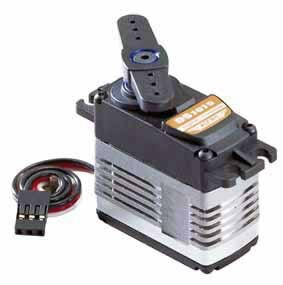 selecting a servo can be confusing, but the choice is very important, it can make the difference between a model that flies great and one that is barely controllable. One thing I have noticed is the lack of attention RC hobbyists give the servos. Servos are the last link in your RC system and the most important. They must be strong enough to deflect and hold a control surface in a desired position, but you don’t have to add unnecessary weight and cost by using an oversize heavy servo. An inadequate servo wont center properly and will allow the air loads to push the control surface towards the counter position also known as BLOW BACK. The model will never fly correctly under these conditions. Because of all the variables in airplane design. For instance, a 400 size motor equipped trainer will not need the same servo power as a 3D plane would with the same motor. The 3D plane will have a much larger control surface and deflection and therefore much larger air loads than the trainer.
selecting a servo can be confusing, but the choice is very important, it can make the difference between a model that flies great and one that is barely controllable. One thing I have noticed is the lack of attention RC hobbyists give the servos. Servos are the last link in your RC system and the most important. They must be strong enough to deflect and hold a control surface in a desired position, but you don’t have to add unnecessary weight and cost by using an oversize heavy servo. An inadequate servo wont center properly and will allow the air loads to push the control surface towards the counter position also known as BLOW BACK. The model will never fly correctly under these conditions. Because of all the variables in airplane design. For instance, a 400 size motor equipped trainer will not need the same servo power as a 3D plane would with the same motor. The 3D plane will have a much larger control surface and deflection and therefore much larger air loads than the trainer.
Your low wing sport model falls somewhere between the two.
For a 400 size sport plane, you will need a servo that produces at least 15 oz/inch of torque.
The torque figures are at 4.8volts, manufactures also list the higher torque values when using a 6V battery pack.
There are other considerations in addition to torque when you select your servo. Servo speed will not be as critical for your sport model as it would be for the precision aerobatic or micro heli. A transit speed of around 0.20 second per 60 degrees of rotation will be adequate. Obviously a faster servo will result in quicker control response, but servo speed usually costs money, and the difference is not noticeable in sport models.
An example of this would be my 3D Sammy plane, I use high speed servos at .08 seconds per 60 degrees to provide me with quick movements of my surfaces for better 3D flying.
Digital micro servos are the latest to hit the scene. They are far superior to standard servos in precision and holding power. Their main drawback apart from their cost, is their significantly higher current draw/drain. For most small electric aircraft applications, a digital servo is overkill but if you want to best and money is no object, digital is the way to go.
Some things to note:
Generally speaking, the way one must pick their servo is by the size of not only the motor, but the plane itself. The weight of the plane as a whole is what really counts on the type of servo and size of servo you choose.
Most planes that are in the range of 400grams or 14oz range, the weight and size of the servo would be in the 6grams to 12grams. Not all the time but generally speaking.
Planes that are in the 955gr/33.7oz range, the weight and size of the servo would be around 10gram to 20 gram servos. Again this is generalizing because every plane could be different from their style of flying.
For fast jets and wings that are in the 400gram weight, I like to stick with 15gram servos that are metal gear, at the least .08 to .09 second speed, with torque of 2kg/cm to 3kg/cm.
For 3D planes in the 400gram weight class, I like to use 6 to 9gram servos, with .08 second servos with a torque of 1.2kg/cm
if you have any questions about which servo you should pick for your model plane, email me anytime.


